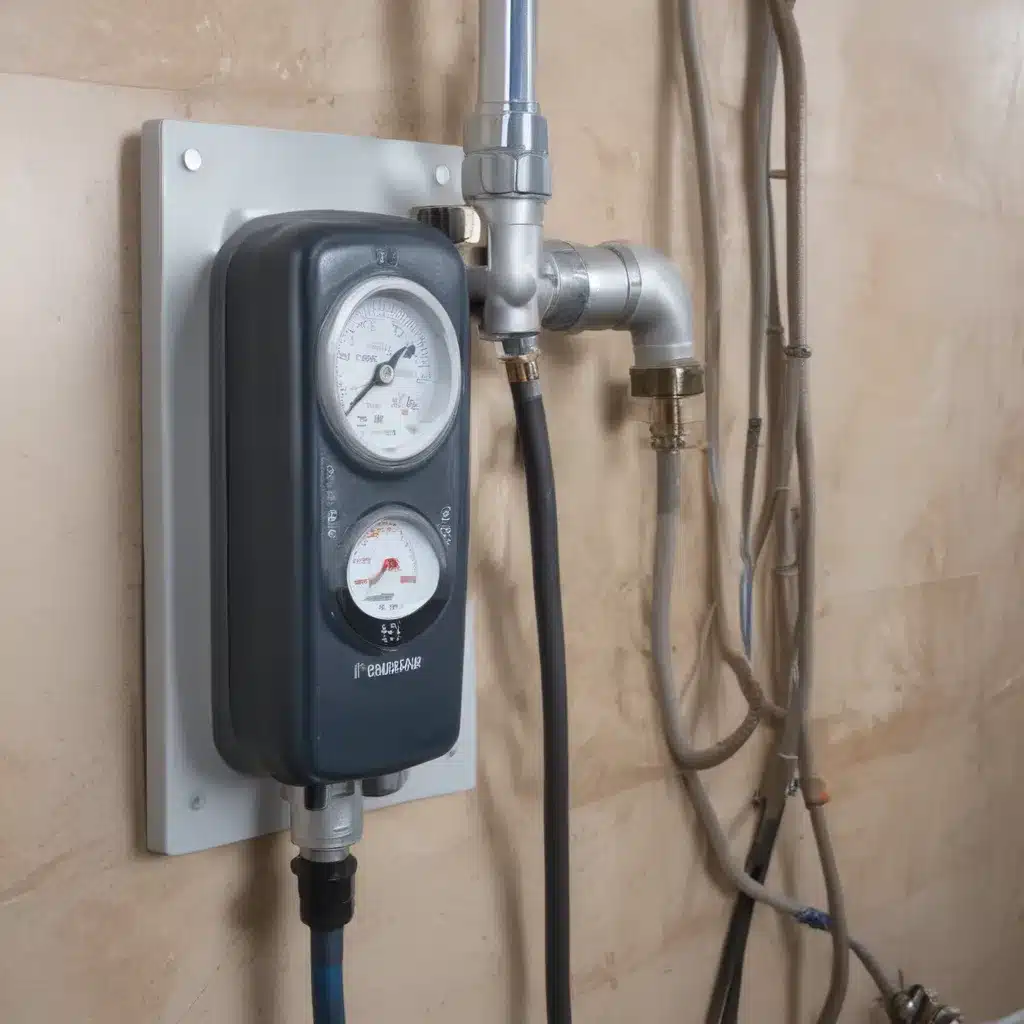
Maintaining optimal water pressure is crucial for the efficient and effective operation of any modern plumbing and drainage system. In our 15 years installing… Whether you’re working on a residential, commercial, or industrial project, ensuring consistent water delivery is paramount to meeting the diverse needs of end-users.
In this comprehensive guide, we’ll explore the fundamental principles of water pressure, outline best practices for pipe sizing and drainage layout, and discuss the importance of compliance with relevant regulations and standards. By the end, you’ll have a thorough understanding of how to optimise water pressure for compliant, high-performing plumbing installations across the UK.
Fundamentals of Water Pressure
At the core of any well-functioning plumbing system lies the concept of water pressure. This refers to the force exerted by the water as it flows through the pipes, which is critical for delivering the required volume and flow rate to fixtures and appliances.
Hydrostatic Pressure
Hydrostatic pressure, or the pressure exerted by the weight of the water column, is a key factor in determining the overall water pressure within a plumbing system. This pressure increases by approximately 0.1 bar (10 kPa) for every 1 metre of vertical height. Understanding this relationship is crucial when designing systems for multi-storey buildings or sloped terrain.
Volumetric Flow Rate
The volume of water flowing through the pipes, measured in litres per minute (L/min), also plays a significant role in water pressure. A higher flow rate generally leads to lower pressure, as the water encounters more resistance due to friction within the pipes.
Pressure-Flow Relationships
The interplay between water pressure and flow rate is a fundamental concept in plumbing design. As water pressure increases, the flow rate tends to rise, and vice versa. Balancing these factors is essential for ensuring adequate water delivery to all fixtures and appliances while maintaining compliance with relevant regulations.
Pipe Sizing Considerations
Proper pipe sizing is a critical aspect of water pressure optimisation. The diameter and material of the pipes can have a substantial impact on the overall system performance.
Pipe Material Selection
When choosing pipe materials, factors such as corrosion resistance, durability, and ease of installation should be considered. Common options in the UK include copper, PEX (cross-linked polyethylene), and CPVC (chlorinated polyvinyl chloride), each with their own unique advantages and disadvantages.
Diameter Calculations
The pipe diameter might want to be selected to accommodate the anticipated peak flow rates and maintain adequate pressure throughout the system. Oversized pipes can lead to low water velocities and potentially stagnant water, while undersized pipes can result in excessive pressure drops and flow restrictions.
Frictional Losses
As water flows through the pipes, it encounters resistance due to friction, which can cause a significant decrease in pressure. Factors such as pipe length, elbows, and other fittings can contribute to these frictional losses, and might want to be accounted for in the overall system design.
Drainage Layout Optimization
Efficient drainage is essential for maintaining proper water pressure and preventing issues such as backflow and water stagnation. Two common drainage system types are gravity-fed and pumped drainage.
Gravity-Fed Systems
In a gravity-fed drainage system, the slope of the pipes is designed to harness the force of gravity to move the wastewater away from the building. Careful consideration of pipe gradients and pipe sizes is required to double-check that proper drainage without compromising water pressure.
Pumped Drainage
For situations where gravity-fed drainage is not feasible, such as in basements or below-ground applications, a pumped drainage system may be necessary. These systems utilize submersible pumps to actively move the wastewater, and require careful integration with the overall plumbing design to maintain optimal water pressure.
Plumbing Code Requirements
It’s important to double-check that that the drainage layout and design comply with the relevant national plumbing codes and local water authority guidelines. Failure to do so can result in non-compliant installations, potential legal issues, and suboptimal water pressure performance.
Compliance and Regulations
Maintaining compliance with various regulations and standards is essential for ensuring the safety, efficiency, and longevity of any plumbing and drainage system.
National Plumbing Codes
In the UK, the Water Supply (Water Fittings) Regulations 1999 and the British Standard BS EN 806 provide comprehensive guidelines for the design, installation, and maintenance of plumbing systems. Adherence to these codes is mandatory for all new and renovated installations.
Local Water Authority Guidelines
In addition to national regulations, it’s crucial to be aware of any local water authority guidelines that may impose additional requirements or restrictions on plumbing systems. These can include specifications for water pressure, flow rates, and backflow prevention measures.
Energy Efficiency Standards
As sustainability becomes an increasingly important consideration in the building industry, energy-efficient plumbing solutions are gaining traction. This may involve the use of low-flow fixtures, pressure-regulating valves, and high-efficiency water pumps to minimise energy consumption and reduce the environmental impact of the plumbing system.
By staying up-to-date with the latest regulations, guidelines, and industry best practices, plumbing professionals can double-check that that their installations not only deliver optimal water pressure but also comply with all relevant standards, ultimately providing their clients with a reliable, efficient, and compliant plumbing system.
For more information on water pressure optimisation and compliant plumbing solutions, please visit Plumbing Drains North Wales. Our team of experienced professionals is dedicated to helping you design, install, and maintain modern, high-performing plumbing and drainage systems across the UK.Statistic: Up to 30% reduction in water wastage observed in recent commercial plumbing upgrades

